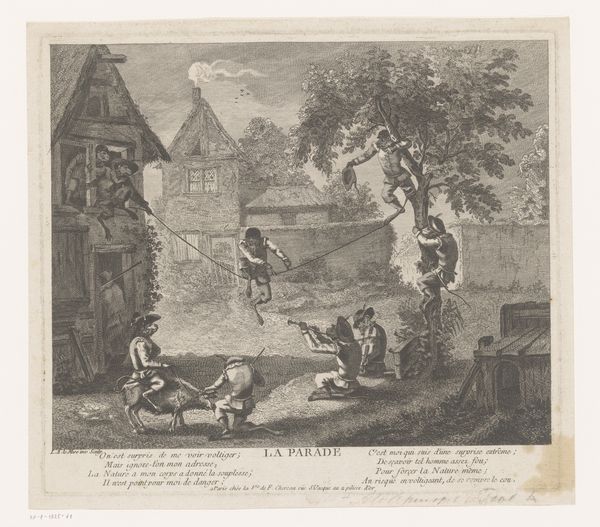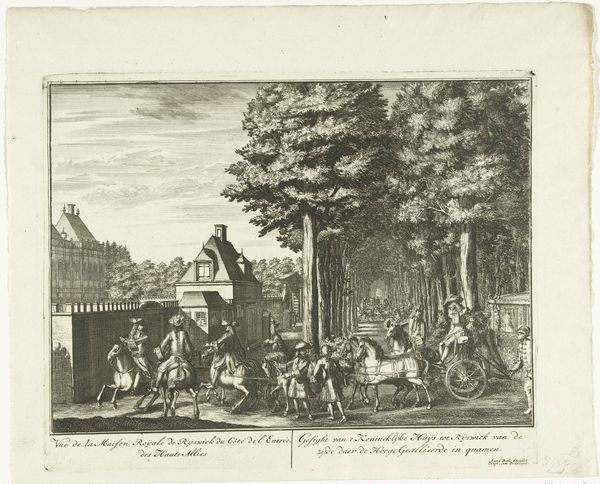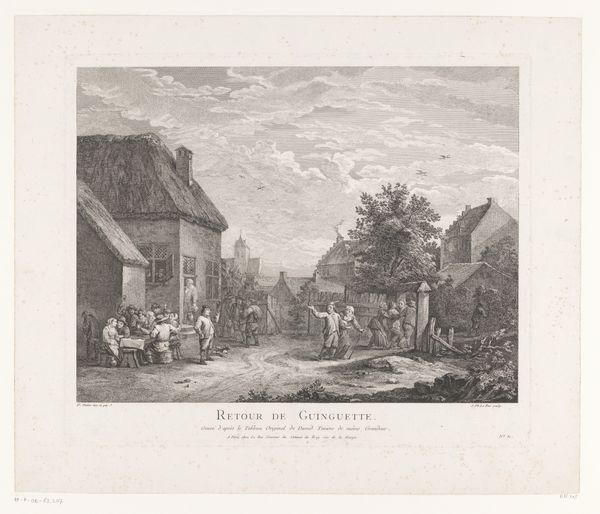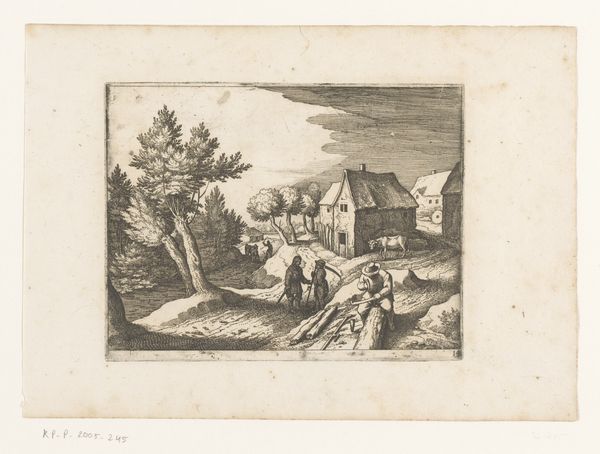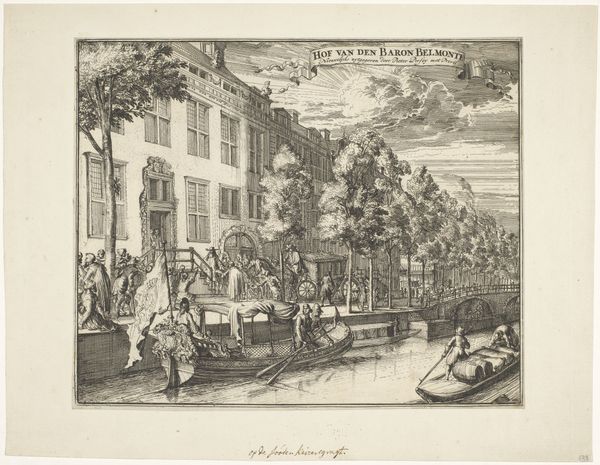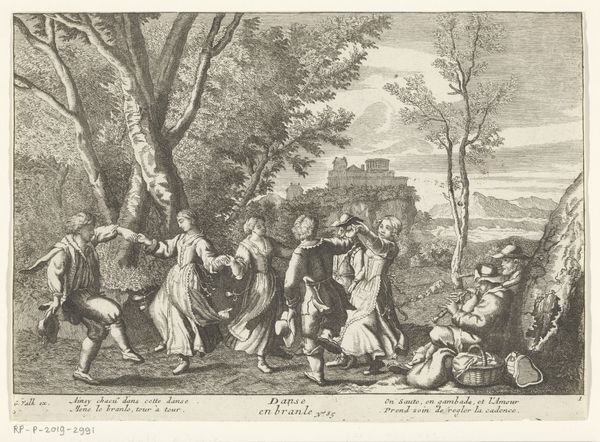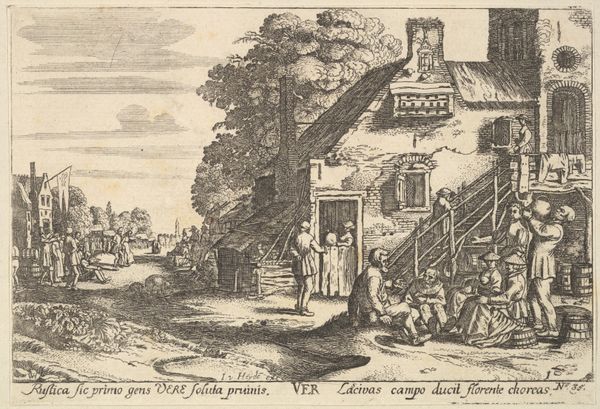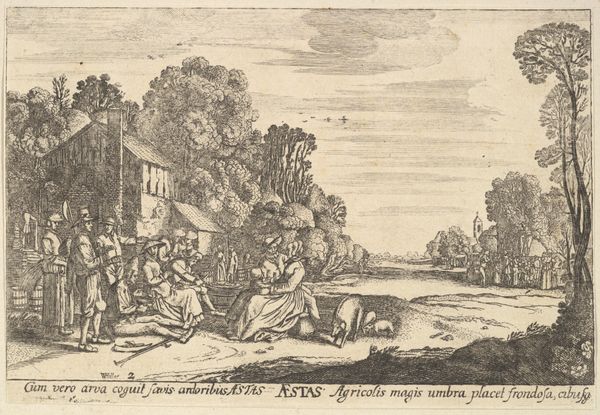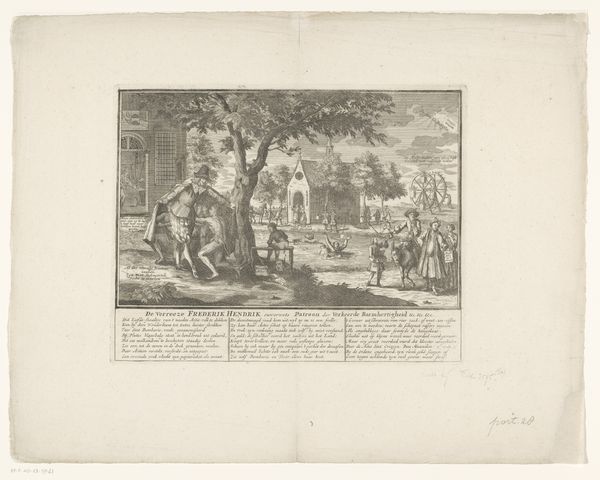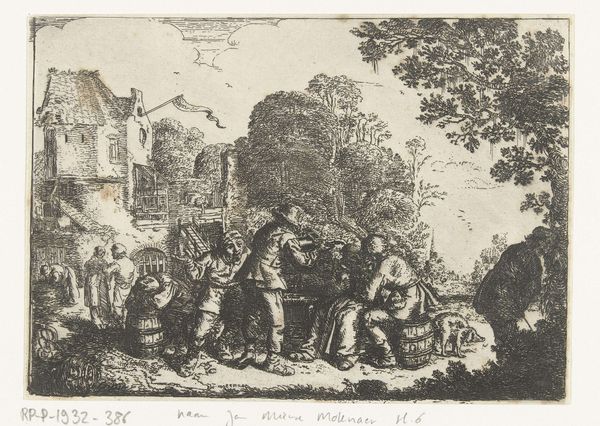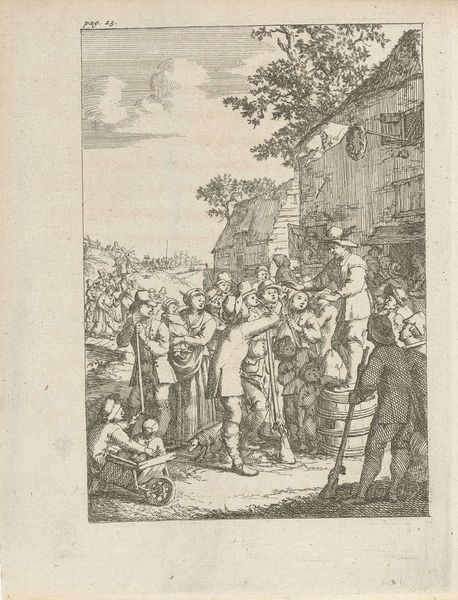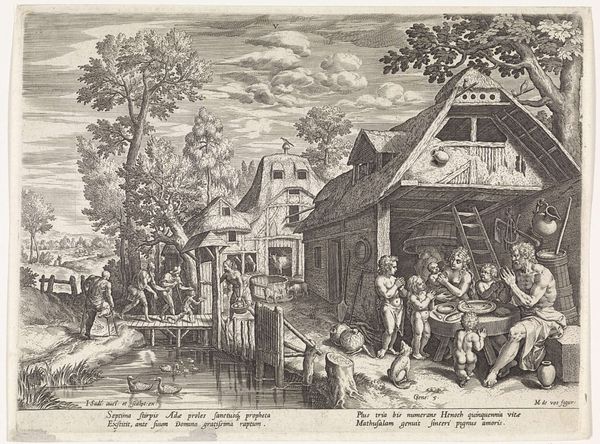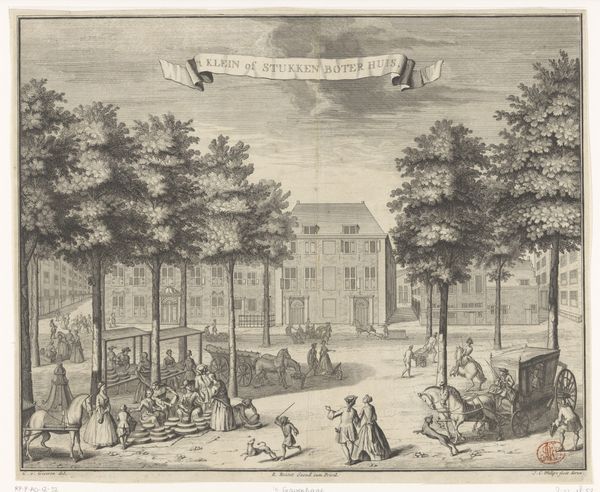
print, engraving
narrative-art
baroque
old engraving style
genre-painting
engraving
Dimensions: height 223 mm, width 250 mm
Copyright: Rijks Museum: Open Domain
Editor: So, here we have "Drinkende en dansende apen," or "Drinking and Dancing Apes," an engraving by Louis Le Mire, sometime between 1738 and 1757. It's quite playful, but what strikes me is how the artist has depicted the apes almost as caricatures of humans. What do you see in this piece, beyond the obvious humour? Curator: As a materialist, my eye is drawn to the process of printmaking itself. Look at the lines, the density of hatching, the way the image is constructed through labor. Consider also the socio-economic context. Prints like this were often mass-produced and consumed by a growing middle class. Do you think this portrayal of apes connects with any existing cultural or social views of that era? Editor: I hadn't thought of that! The idea of accessible art for a growing middle class makes sense, especially with its clear narrative. It almost feels like a satirical comment on human behaviour through the guise of monkeys. But is there an intended criticism of certain production processes too? Curator: Precisely! This engraving acts as a commentary not just on behaviour, but perhaps the relentless churn of popular imagery and entertainment. What materials and processes do we value, and why? Think about it in relation to "high art" versus "low art"—where do you feel the piece blurs this boundary, using labor and materiality? Editor: I think that I can consider it in regards to this boundary due to the craftsmanship versus accessibility; maybe its commentary relates directly to consumer culture in early modern Europe. Now I have a greater appreciation for understanding its purpose in society. Curator: Indeed! Considering how material production intertwines with cultural critique helps us understand art's true depth. I hadn't realised how it could be both lighthearted and poignant.
Comments
No comments
Be the first to comment and join the conversation on the ultimate creative platform.
